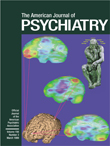Symptoms and Cognition as Predictors of Community Functioning: A Prospective Analysis
Abstract
OBJECTIVE: It has been suggested that level of cognitive functioning as assessed by formal neurocognitive tests may be as important as, or even more important than, symptoms in predicting level of community functioning for patients with schizophrenia. The results of past prospective studies, when carefully examined, do not consistently support this hypothesis. In the current study, the authors used symptom and neurocognitive data to predict subsequent level of functioning in the community. METHOD: Neurocognitive and symptom data collected as part of an earlier study were used to predict the community functioning of 50 patients with a diagnosis of schizophrenia. Using the Life Skills Profile, staff of a community mental health program assessed community functioning while blind to the earlier symptom ratings and neurocognitive performance. RESULTS: Symptoms were more predictive of community functioning than were neurocognitive measures. Disorganization symptoms were generally more predictive of community functioning than was either psychomotor poverty or reality distortion. CONCLUSIONS: The results of this study and of previous longitudinal studies suggest the importance of using symptom levels after optimal treatment, rather than symptoms during acute episodes, as predictors of community functioning. They also indicate the need to evaluate the effects of treatment on disorganization as a separable dimension of symptoms. (Am J Psychiatry 1999; 156:400–405)



